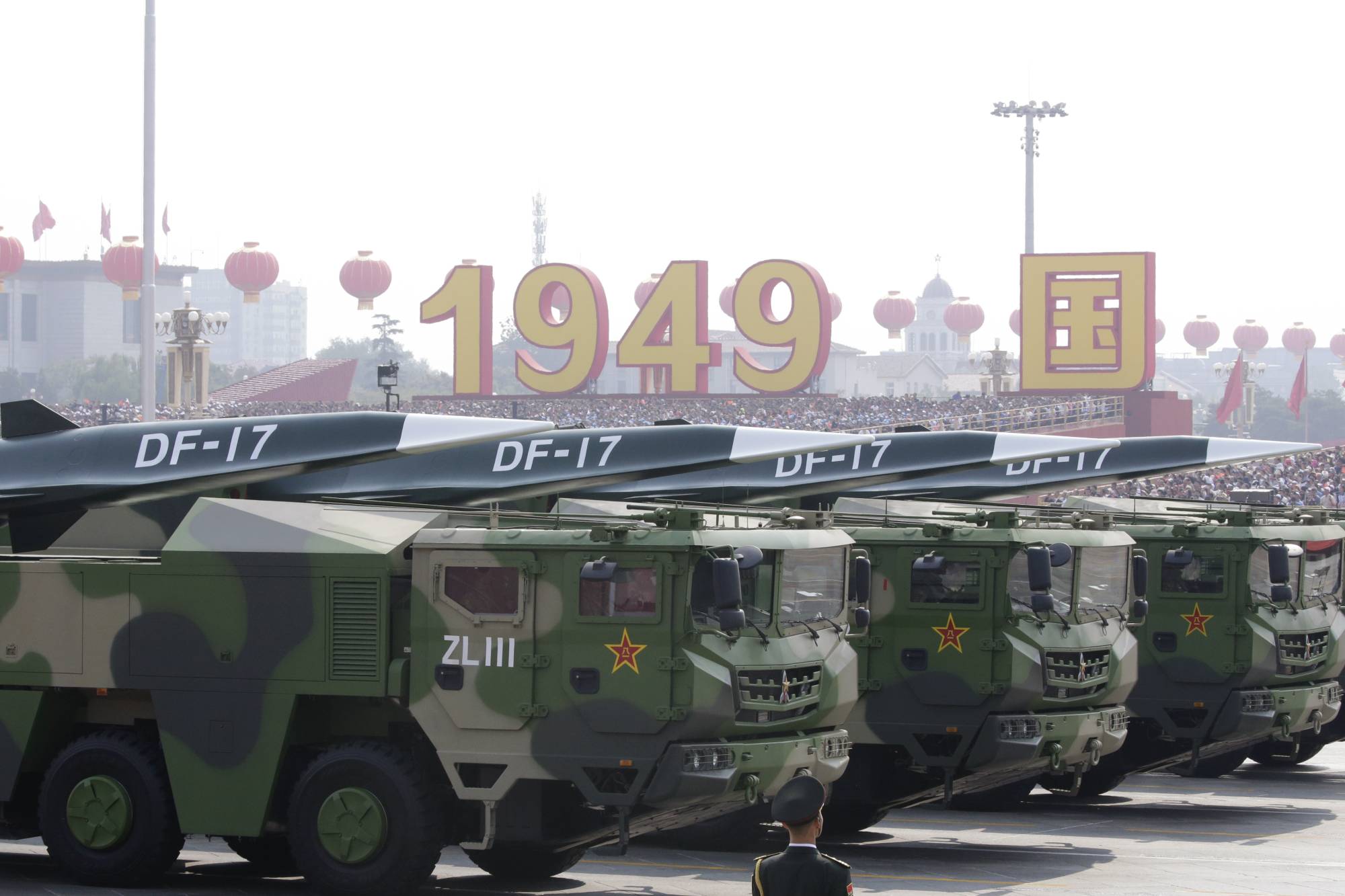Tokyo’s efforts to develop hypersonic aircraft and weapons reached a milestone Sunday, when the Japan Aerospace Exploration Agency (JAXA) successfully conducted its first combustion flight test using a device designed to gather critical data for the development of a scramjet engine.
The device was carried in the nose of a test rocket launched into space at 5 a.m. from JAXA’s Uchinoura Space Center in Kagoshima Prefecture. The 9.15-meter-long S-520-RD1 rocket released the device about 3½ minutes into the launch at an altitude of 168 kilometers. The combustion test was conducted for about six seconds at an altitude of approximately 30 km as the device was returning to Earth.
According to JAXA officials, the data collected from the trial will be used in wind tunnel testing, with Japan aiming to flight-test a real engine during the next launch.
The test, which is part of a project by the Defense Ministry’s Acquisition, Technology and Logistics Agency (ATLA), is aimed at researching and developing scramjet engine technologies that will allow aircraft and weapons to fly at hypersonic speeds — equivalent to at least five times the speed of sound. One of the planned military applications of this technology is the development of a hypersonic cruise missile (HCM).
A scramjet engine draws the oxygen needed for combustion from the air, thereby making it suitable for powered hypersonic flight within the Earth’s atmosphere and avoiding the need for it to carry liquid oxygen. According to documentation provided by ATLA, these systems are expected to use dual-mode scramjet systems — a combination of ramjet and scramjet engines, the former of which are used to power vehicles at subsonic and supersonic speeds, while the latter achieve hypersonic speeds.
Japan outlined its plan to develop and acquire highly maneuverable hypersonic weapons about three years ago, amid Tokyo’s concerns over the growing military capabilities of neighboring countries such as China and North Korea.
“Japan is looking to acquire a ‘stand-off defensive attack capability’ in two development stages, the first of which will focus on the development of components and technologies related to the weapon’s warhead, airframe as well as fire-control, guidance and propulsion systems,” said Tokyo-based defense expert Kosuke Takahashi. The second stage will involve using the results from the first stage to test and evaluate the weapon and its capabilities, he added.
According to a 2019 timeline provided by the Defense Ministry, Japan intends to field this missile in about 2030, followed by an improved version by 2038, Takahashi said. However, the ministry has cautioned that this timeline is tentative, pointing out that Japan would “endeavor to obtain the technologies earlier.”
HCMs are not the only defense project set to benefit from Japan’s research on hypersonics.
Tokyo recently began work on a so-called hypervelocity gliding projectile (HVGP). The weapon — which is expected to have a range of at least several hundred kilometers — is designed for launch using a rocket motor, with the projectile, or glide vehicle, separating from it at a high altitude and then gliding at hypersonic speeds to its target, Takahashi noted.
The HVGP, which is intended to be used in defending Japan’s remote southwestern islands, will be developed in two variants — Block I and Block II — with the latter featuring higher speed and maneuverability, according to ATLA.
“Japan is anxious to catch up with countries such as Russia and China, both of which are making rapid progress with their hypersonic weapon programs,” said Takahashi.
China fielded its first missile equipped with a hypersonic glide vehicle in 2020, according to the Pentagon, and has greatly advanced its scramjet engine development.
The United States, Japan’s ally, is also making progress in this field, with the Pentagon announcing earlier this month that it successfully tested two Lockheed Martin test vehicles for the Air-Launched Rapid Response Weapon hypersonic missile.
At the same time, Tokyo is working on capabilities to protect the country from such weapons. In fact, Japan and the U.S. agreed to deepen cooperation on emerging military technologies, including on finding ways to counter hypersonic missiles, as part of a pact signed in January.
The deal includes provisions for joint research, development and production projects in military technologies ranging from hypersonic missiles to space-based defense capabilities.
The provisions are aimed at “strengthening the defense capabilities and securing the technological superiority of the Japan-U.S. alliance,” while at the same time improving interoperability between allied forces, according to Japan’s Foreign Ministry.
In its annual economic policy road map released last month, the Japanese government said it would aim to drastically boost defense spending “within the next five years.”
Among other things, Tokyo is prioritizing the development of advanced technologies such as electromagnetic railguns — high-power microwave- and laser-based weapon systems — to help counter the growing missile threat posed by neighboring countries amid what the Defense Ministry calls an “increasingly severe security environment” around Japan.





